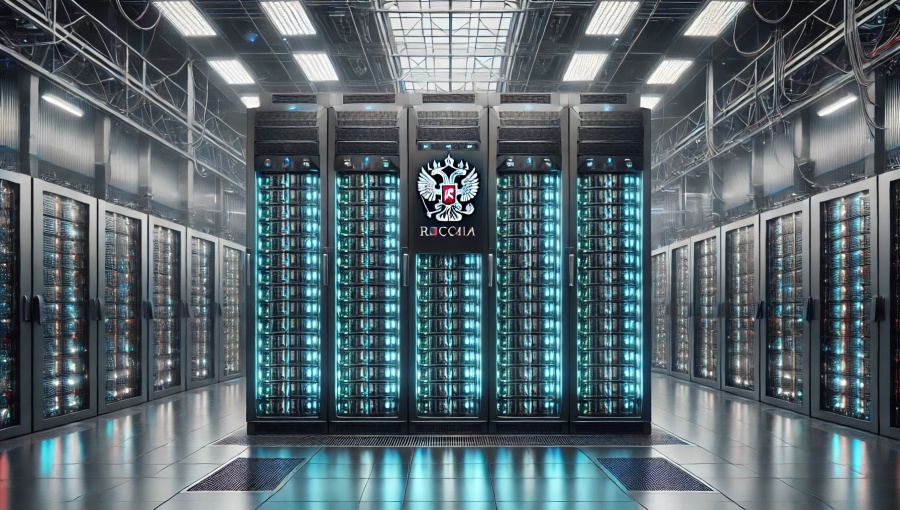Russia has made a major leap in technology with its latest breakthrough in photonic computing. Unlike traditional computers that rely on electrical signals, photonic computers use light to perform calculations. This innovation could redefine how we process data, making supercomputers faster and more energy-efficient.
What Is Photonic Computing?
Photonic computing is a cutting-edge technology that uses photons (particles of light) instead of electrons to transfer information. Light travels faster than electricity, allowing data to move at unprecedented speeds. This results in faster computing with less heat generation and lower energy consumption.
Traditional computers struggle with the heat and energy demands of increasingly complex tasks. Photonic computing, however, could solve these issues. By reducing heat generation and power consumption, it offers a sustainable solution for future data centers and supercomputing facilities.

Russia’s Big Leap in Photonics

Russia’s recent success in photonic computing comes from years of dedicated research. Government-backed initiatives and collaborations between leading universities and research centers have driven this achievement. The development of photonic processors marks a significant milestone, putting Russia at the forefront of next-generation computing technology.
Experts suggest that Russia’s photonic processors could outperform some of the world’s most powerful supercomputers. The country’s advancements in integrated photonics have led to processors capable of solving complex problems much faster than conventional computers. Photonic processors also promise a major boost for machine learning algorithms, enabling AI systems to process vast datasets in real time.

Why It Matters
The implications of Russia’s photonic computing breakthrough are far-reaching. Industries like artificial intelligence (AI), medical research, climate modeling, and financial services could experience exponential growth in computational power. Tasks that once took days could be completed in hours, transforming innovation across various sectors.
Moreover, photonic computing consumes significantly less energy than traditional systems. With data centers responsible for around 1% of global energy consumption, this technology could contribute to substantial energy savings and a reduced carbon footprint.
Medical researchers could accelerate drug discovery by simulating molecular interactions at record speeds. Climate scientists could build highly accurate models to predict and mitigate environmental changes. Even financial analysts could benefit from enhanced predictive models, making faster, more informed decisions.
Competing on the Global Stage
While Russia has made significant strides, other countries are also racing to lead in photonic computing. The United States, China, and several European nations are investing heavily in this technology. However, Russia’s progress positions it as a formidable competitor in the global tech landscape.
International tech giants may soon look to collaborate with Russian firms to integrate photonic systems into their infrastructure. This could lead to joint ventures and knowledge-sharing, accelerating the adoption of photonic computing worldwide. Additionally, nations seeking technological independence may adopt photonic computing to reduce reliance on foreign semiconductor manufacturing.
Challenges and Innovations
Despite its promising potential, photonic computing still faces challenges. Developing scalable, cost-effective photonic processors remains a hurdle. Researchers are also working on refining the materials and manufacturing processes needed for large-scale production.
Building reliable, mass-producible photonic chips involves perfecting nanophotonic materials and minimizing losses from light scattering. Researchers are also exploring hybrid systems that combine photonics and traditional electronics to bridge the gap until pure photonic systems become mainstream.
Furthermore, software needs to catch up. Most algorithms today are designed for electronic computing, requiring specialized software development to maximize the benefits of photonic processors.
Government Support and Future Plans
Russia’s government has announced plans to continue investing in photonics research, offering financial support to startups and encouraging innovation in the sector. The establishment of dedicated research hubs and partnerships with global institutions reflects the country’s commitment to leading in this field.
Additionally, Russia is exploring applications of photonic computing in defense, telecommunications, and space exploration. The ability to rapidly process vast amounts of data in real-time could give the country a strategic advantage in cybersecurity and satellite data analysis.
Final Thoughts
Russia’s photonic computing breakthrough is a game-changer in the world of technology. With light-powered supercomputers offering unmatched speed and efficiency, the possibilities are limitless. From revolutionizing AI to advancing scientific research, photonic computing could shape the future in ways we can only imagine.
The global tech race is heating up, and all eyes are on Russia’s next move. Will photonic computing become the standard for tomorrow’s supercomputers? Only time will tell, but one thing is certain – the world of computing will never be the same again.
Also read: Game-Changer for Expats! How UAE’s Blue Visa Can Transform Your Future














